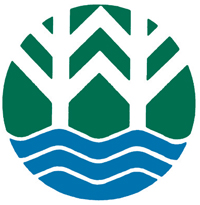June 4 Workshop: Preserving Your Family Archives
Presented by Dana Chandler
 |
Dana Chandler was first trained as a surveyor, civil engineer, and project manager who has designed and built projects throughout the South, the United States, and Latin America. He received his graduate degree in history and archives management from Auburn University, and now works as the University Archivist at Tuskegee University where he has restored the archives to respectability and usefulness. During the last six years, the archives seven dissertations and theses have been written using the now-available collections at Tuskegee University Archives. Currently, Chandler serves as the lead archaeologist for "The Ridge: A Macon County Archaeological Project." Occurring over three seasons, the project has concentrated on a site at Warrior Stand, Macon County Alabama. He has published a number of articles and spoken on Archaeological related subjects, primarily concerning the Maya. |
The Workshop
Unfortunately, we live in a throw-away-world, but we cannot replace the past, we cannot replicate those intangible feelings that come when we see something on display that represents our shared past. We are not just the custodians of the physical world and its history, you are also the guardians of our broader traditions, values and aesthetics. Questions abound concerning how we take care of those things which embody our past and our relationship with it. "How do I preserve my grandfather's Army discharge letter?" "Where should I store my mother's wedding photograph?" "How do I insure my rare comic book?"
This workshop will
discuss preserving your family treasures.
The archives staff will give special focus to preventive preservation
measures, which are simple to achieve and are more economical than the options
available once damage is done.
Collections Care
covers recommendations for good care, handling, and storage, including:
-
What kinds of storage supplies to use and where to buy them
-
Temperature and relative humidity ranges to aim for
-
Where in your home you should and should not store items you value
-
Guidelines for matting and framing
-
How to reduce the risks of light damage and water damage
-
How to deal with damage already done and how to find a conservator
Bring Your Treasures for Preservation Advice
To Attend
- Pre-register by calling (334) 794-3452
- The workshop will be at the Auditorium of the Administrative Building at Landmark Park in Dothan
- Time: 10 am -- 3 pm
- Lunch will be provided
- This workshop is free and open to the public
For more information, contact Dr. Martin Olliff at wiregrassheritage@troy.edu or call 334-983-6556 x 1327
The Wiregrass Common Heritage Project has been made
possible in part by a major grant from the National Endowment for the
Humanities: Exploring the human endeavor



